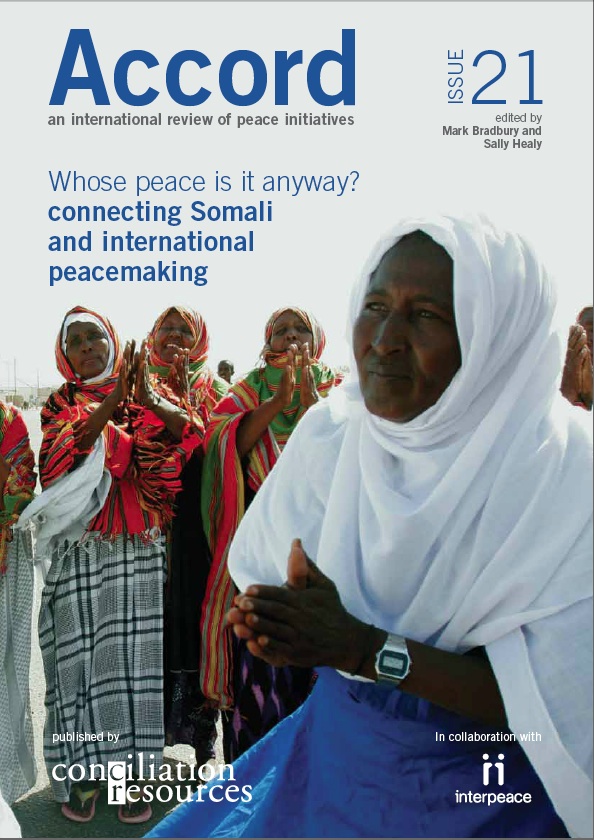Despite the abundance of local peace processes in south central Somalia, they have not led to the establishment of more durable government structures of the type that have emerged in Puntland and Somaliland. Certainly traditional elders have played a critically important role in mediating and regulating the interactions within and between local communities. However a number of factors have made their task more difficult.
First the powerful clan-based faction leaders (the ‘warlords’) that have emerged from the conflict in south central Somalia have consistently challenged traditional elders’ authority. During the prolonged period of chaos and lawlessness, such leaders, along with politicians and business people, recruited armed militia to further their own interests. They also promoted their own choice of elders, who lacked local legitimacy and undermined the existing system of leadership.
Before the collapse of the state, power in the rural communities was mediated through traditional chieftains and elders, supported by government security institutions. The effectiveness of customary law and codes of behaviour was weakened by these ‘merchants of war’, who used tactics of divide-and-rule among the clan elders in pursuit of their own agendas.
The reliance of the international community on armed faction leaders as their primary interlocutors in Somalia and apparent representatives of clan constituencies has compounded the problem and further eroded the standing of traditional authorities. Dahiye Uulow, a prominent elder in Belet Wein, has stated that “the emergence of armed warlords and business people during the anarchy of the civil war period is the primary reason for the failure of attempts to settle local Somali conflicts”.
A second difficulty has been that fragmentation and distrust within the main clan families, which has led smaller sub-clans to identify their own leaders. Traditionally clan elders were seen as responsible for ensuring the peaceful co-existence of the community as a whole and for working to resolve local conflicts. However the circumstances of the civil war led some elders to mobilise their own clan militia for inter- and intra-clan fighting and to side with their kin, even when they were the aggressors.
In the Somali cultural context, the declaration of responsibility – “I am an aggressor” – by the relevant party is critical to the success of traditional conflict resolution. If the responsible party declines to confess to being the aggressor, the reconciliation initiative usually fails.
Another important feature of the civil war period in many areas of south central Somalia has been the breakdown of traditional customary law (xeer) between pastoral and agricultural communities. In rural communities disputes over access to shared grazing or water sources and agricultural land are common and can become violent.
In most cases a xeer exists between co-habiting groups that governs social relations and access to communal resources. Before the collapse of the Somali state these kinds of conflicts were generally arbitrated successfully by elders using xeer. Any clan member (or clan) who challenged the arbitration faced sanctions (Maraado-Ta’siir) by the clans concerned.
The efficacy of customary law in these circumstances rested on a relative balance in power between clans. However the arming of different clans during and after the Siyad Barre regime typically left agricultural communities at a military disadvantage to better-armed pastoralist groups.
Furthermore, during the initial years of the war agricultural communities faced occupation by militarily stronger clans with whom they had no established relationship or xeer. In these circumstances, and in the absence of state protection, the rights of the weaker party were overrun.
A significant imbalance of power between the parties in conflict can be an obstacle to reconciliation as the stronger group may impose unreasonable conditions, provoke confrontations or otherwise act as spoilers in the reconciliation process.
In a case where pastoralists are the aggressors, elders of the agricultural community will tend not to ask for a meeting to discuss the issue because they expect little recompense from the more powerful group. However, if the aggressor is from the agricultural community, customary law will be applied and compensation paid to restore the peace.
The application of customary law and traditional practices has helped to shore up stability in some places in south central Somalia, but in many cases where there is an unequal relationship between the communities it falls short of genuine reconciliation.
A particularly damaging effect of the civil war has been the undermining of the xeer that protected vulnerable groups – Birmageydo, ‘those who are spared from the spear’. This includes women, children, the elderly, titled elders and religious leaders, and peace delegates. Repeated violations of such codes have weakened this important function of traditional governance and resulted in the deaths of those who would normally be considered ‘safe from harm’.

